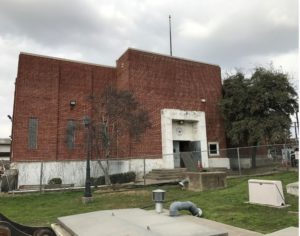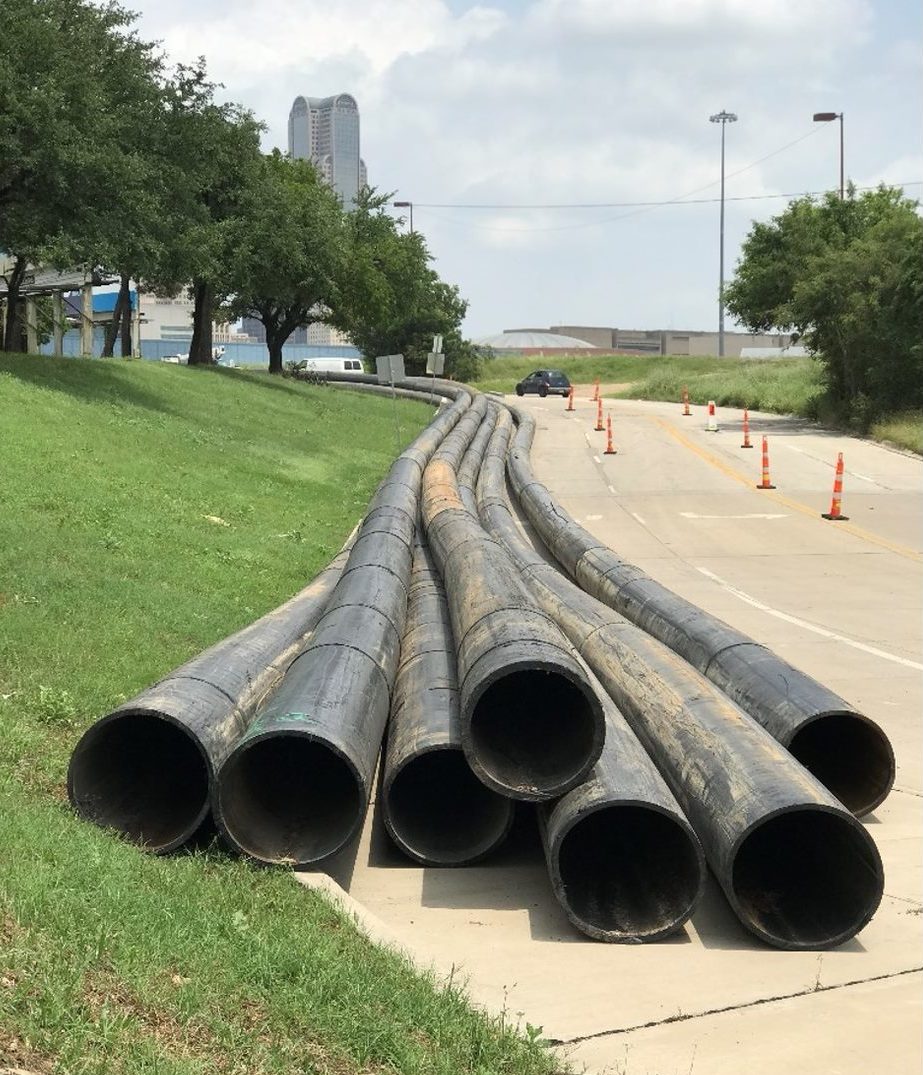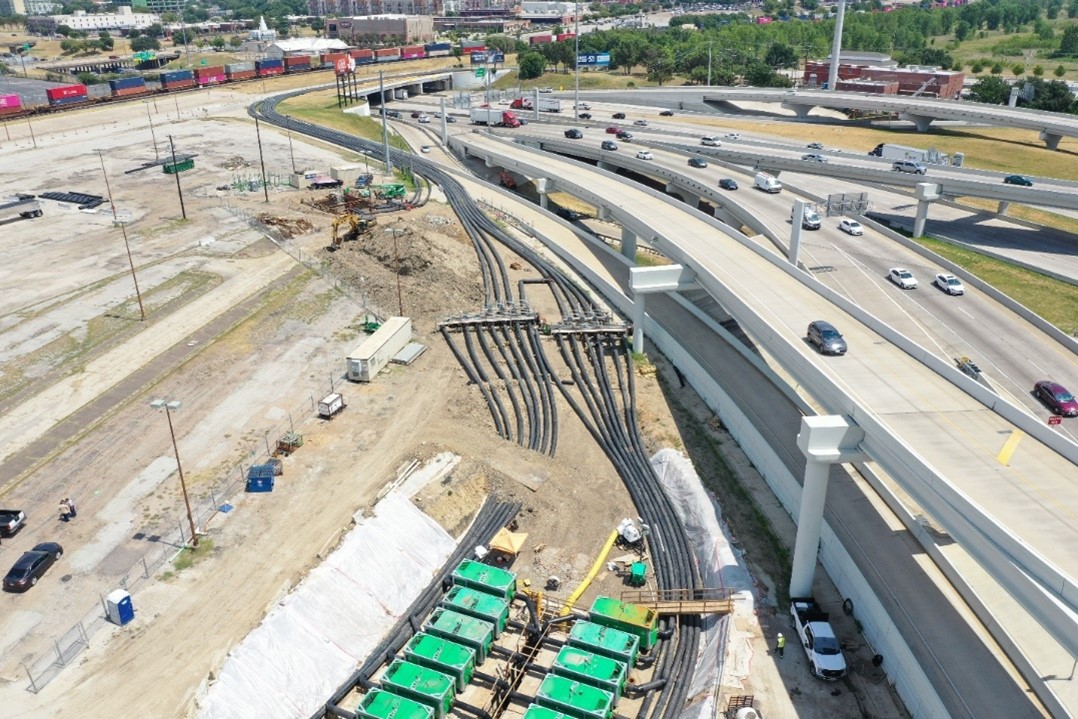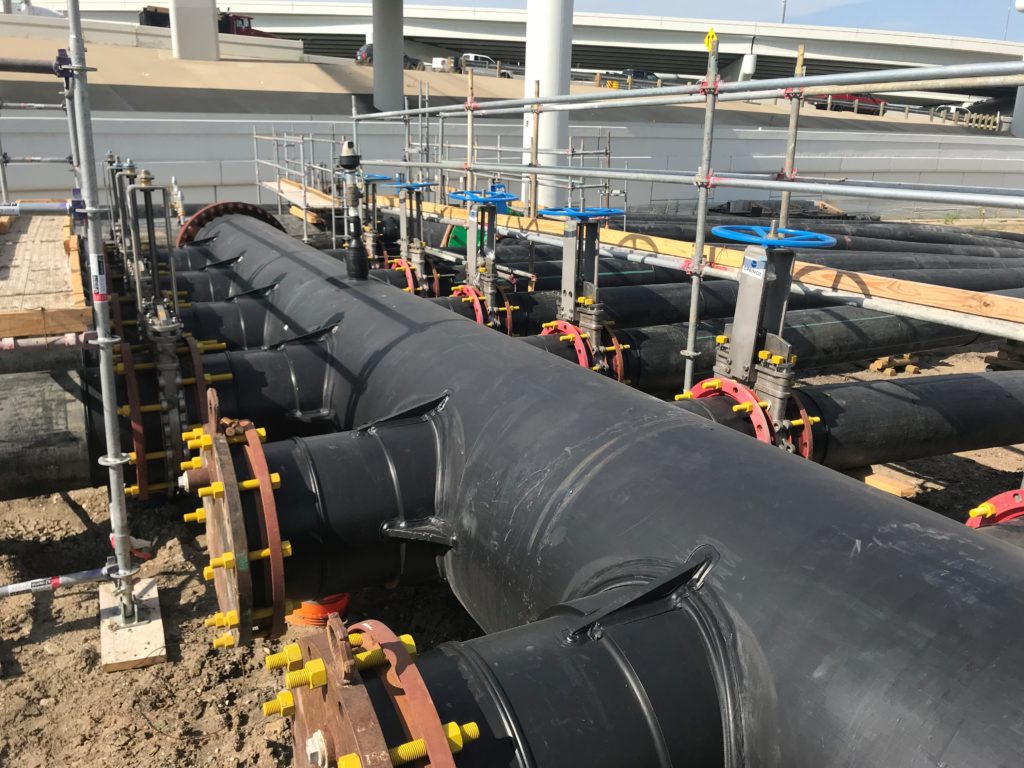Wastewater Bypass in the Heart of Dallas
In downtown Dallas, approximately 40% of the City’s sewer flow passes through a single 90-inch interceptor structure, which was deteriorating and required immediate repair. Because the structure’s site is inaccessible to large construction equipment, critical repairs had to take place from within the structure.

To facilitate rehabilitation of the deteriorating wastewater interceptor structure, a sanitary sewer temporary bypass pumping system was designed and constructed to transfer flows from Downtown Dallas into a downstream siphon inlet structure near the Cadiz Street Pump Station. The ideal temporary bypass pumping alignment required the crossing of an Interstate 30 bridge.
Collection System Overview
The Dallas Water Utilities (DWU) wastewater collection system network consists of roughly 44,000 manholes and over 6,400-kilometers (4,000-miles) of pipelines. The wastewater collection system is divided into 12 discrete major sewersheds. The wastewater flows generated by the East Bank sewershed historically flowed to the Cadiz Street Pump Station to be pumped to the City’s Central Wastewater Treatment Plant (CWWTP). A recently constructed dual siphon system was utilized for the transfer of flows across the Trinity River and to large gravity interceptors that flowed to CWWTP. Cadiz Street Pump Station remained offline for the duration of the temporary bypass pumping operations.
Pumping Equipment and System Components
The bypass pumping capacity required the use of large pumps at two separate temporary bypass pump stations.
Two types of pumps were allowed for the temporary bypass pumping system, vertical turbine, and centrifugal end suction. Both pump types can be offered with large capacities and proven performance with pumping raw sewage. Centrifugal end suction pumps were supplied for the temporary bypass pumping systems.

High-density polyethylene (HDPE) piping was required for the bypass pumping systems. Seven 24-inch discharge pipes were utilized for the temporary bypass pumping operations. In addition to the pipes required to move the required bypass pumping capacity, a redundant pipe was also laid for each bypass pump station, to provide additional resiliency to the system in case of pipe leak or failure.
Spill containment was required for the bypass pump system. The crossing over Interstate 30 along the Hotel Street Bridge, was a critical control area to protect the health and welfare of the public.
A Hydro Barrier system with HDPE sheeting was installed for the Hotel Street Bridge containment. The sheeting was placed under the two outside discharge pipes with the Hydro Barrier along the perimeter. The pipe provided a weighted seal to the concrete pavement to prevent leaks from migrating along the bridge.
Web-based online monitoring of both bypass pumping wet wells and the siphon inlet structure provided real-time data on bypass operations and water surface elevations. Operational procedures and water surface elevation triggers were developed to keep the gravity interceptors and siphon system online even during peak flow conditions.
Successful Procedure
In continuous operation for 34 days in the summer of 2019, the bypass system enabled the safe and uninterrupted operation of the City’s collection system while the interceptor structure was rehabilitated and protected downtown from sanitary sewer overflows during construction. Although the bypass operations occurred in the heart of Downtown Dallas, the project went largely unnoticed by the public, just as planned.

